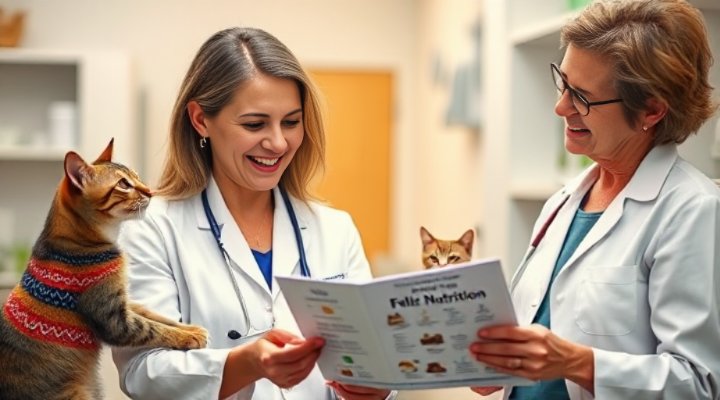As a cat owner who has nurtured several indoor felines over the years, I’ve learned that finding the best cat food for indoor cats isn’t just about picking the prettiest package—it’s about understanding their unique nutritional requirements. Indoor cats lead different lives than their outdoor counterparts, and consequently, they have distinct dietary needs that demand careful consideration.

Understanding Indoor Cat Nutritional Requirements
Indoor cats typically have lower energy expenditures than outdoor cats, which means they require fewer calories. However, this doesn’t mean they need less nutrition—quite the opposite! The best cat food for indoor cats must be nutrient-dense while managing calorie intake effectively.
According to veterinary nutritionists, indoor cats often face specific health challenges that can be addressed through proper nutrition. For instance, weight management becomes crucial since indoor cats are more prone to obesity due to reduced activity levels. Furthermore, hairball control is essential because indoor cats groom themselves frequently in their controlled environment.
Key Nutritional Components for Indoor Cats
When evaluating the best cat food for indoor cats, several nutritional components deserve special attention. Firstly, protein quality is paramount—cats are obligate carnivores requiring high-quality animal protein. Secondly, fiber content plays a vital role in hairball management and digestive health. Thirdly, specific vitamins and minerals support urinary tract health, which is particularly important for indoor felines.
That is to say, the ideal formulation balances these elements while maintaining palatability. After all, even the most nutritionally perfect food won’t benefit your cat if they refuse to eat it! During my experience with various brands, I’ve found that gradual transitions between foods help maintain digestive stability while determining your cat’s preferences.

Selecting the Right Type of Food
The debate between dry kibble, wet food, and raw diets continues among pet nutrition experts. Each option has its advantages, and the best cat food for indoor cats might involve a combination approach. Dry food often helps with dental health through mechanical cleaning action, while wet food provides essential moisture and can be more palatable.
For example, many veterinarians recommend incorporating wet food into indoor cats’ diets to support urinary tract health. The additional moisture content helps prevent crystal formation and supports kidney function. Meanwhile, high-quality dry food can serve as a convenient base diet that promotes dental health through chewing action.
Furthermore, some owners find success with specialized formulations like those discussed in our Healthy Cat Treats Recipes Collection. These homemade options can complement commercial diets while ensuring quality control over ingredients.
Reading and Understanding Cat Food Labels
Deciphering cat food labels is crucial for identifying the best cat food for indoor cats. The ingredient list reveals much about quality, with animal proteins ideally appearing first. However, understanding guaranteed analysis percentages helps ensure nutritional adequacy for your cat’s life stage and health status.
Moreover, looking beyond marketing claims to actual nutritional content prevents falling for clever packaging without substance. Terms like “natural” or “premium” aren’t regulated, while AAFCO statements provide concrete information about nutritional completeness. Consequently, educated consumers can make better choices for their feline companions.

Special Considerations for Different Life Stages
Kittens, adults, and senior cats have varying nutritional requirements, even within indoor environments. Kittens need higher protein and calorie densities for growth, while seniors may benefit from joint support nutrients and adjusted calorie content. The Royal Canin Kitten Feeding Guide offers excellent guidance for young indoor felines.
Senior indoor cats often require specialized formulations that address aging-related concerns. Reduced calorie needs, joint support supplements, and ingredients that support cognitive function become increasingly important. Additionally, dental health considerations might influence food texture choices as cats age.
According to research from the American Veterinary Medical Association, life stage appropriate nutrition significantly impacts longevity and quality of life. Therefore, regularly reassessing your cat’s nutritional needs as they age ensures continued optimal health.
Addressing Common Health Issues
Many indoor cats develop specific health concerns that nutritional strategies can help manage. Obesity remains the most prevalent issue, requiring careful calorie control and increased activity. Urinary tract health represents another critical area where proper nutrition makes a substantial difference.
For instance, foods with controlled mineral content and urinary pH modulation can prevent crystal formation. Similarly, weight management formulas help prevent diabetes and joint stress associated with excess weight. Hairball control formulations containing natural fibers facilitate passage through the digestive system.
Meanwhile, cats with food sensitivities might benefit from limited ingredient diets or novel protein sources. The key lies in identifying individual needs and selecting foods that address them specifically rather than opting for one-size-fits-all solutions.

Implementing Successful Feeding Strategies
Choosing the best cat food for indoor cats represents only half the battle—implementation matters equally. Portion control prevents overfeeding, while scheduled meals establish healthy routines. Free-feeding, while convenient, often contributes to weight gain in less active indoor cats.
Interactive feeders and food puzzles provide mental stimulation while slowing consumption. This approach mimics natural hunting behaviors and prevents rapid eating that can lead to digestive issues. Additionally, multiple small meals throughout the day align better with cats’ natural grazing tendencies.
Water availability remains crucial, especially for cats consuming dry food predominantly. Fresh, clean water should always be available, and some owners find water fountains encourage increased consumption. Proper hydration supports urinary health and overall metabolic function.
Transitioning Between Foods
When introducing new food, gradual transitions prevent digestive upset. Mix increasing amounts of new food with decreasing amounts of old food over 7-10 days. This method allows cats’ digestive systems and taste preferences to adjust comfortably to the change.
Monitoring during transitions helps identify any adverse reactions or preferences. Some cats adapt quickly, while others require more patience and encouragement. Using toppers or mix-ins sometimes facilitates acceptance of new formulations, though this should be done judiciously to maintain nutritional balance.
Remember that occasional reluctance doesn’t necessarily indicate poor food quality—cats can be particular about textures and flavors. Persistence and patience usually yield better results than frequent switches between brands, which can cause digestive instability.

Conclusion: Investing in Feline Wellbeing
Selecting the best cat food for indoor cats represents an investment in your feline companion’s long-term health and happiness. While the process requires research and consideration, the rewards include improved vitality, reduced veterinary costs, and enhanced quality of life for your cat.
Remember that individual needs vary, and what works perfectly for one cat might not suit another. Regular veterinary consultations help ensure nutritional choices align with your cat’s evolving needs. Additionally, observing your cat’s condition, energy levels, and overall wellbeing provides valuable feedback about dietary adequacy.
For further information about feline nutrition, the FDA’s pet food guidelines offer valuable insights into safety and labeling regulations. Combined with veterinary guidance and careful observation, you can confidently provide optimal nutrition for your indoor feline friend.
Related Keywords: indoor cat nutrition, feline dietary requirements, weight management cat food, hairball control formulas, urinary health cat food, premium indoor cat nutrition, senior cat food options, kitten indoor diet, grain-free cat food, limited ingredient cat food

